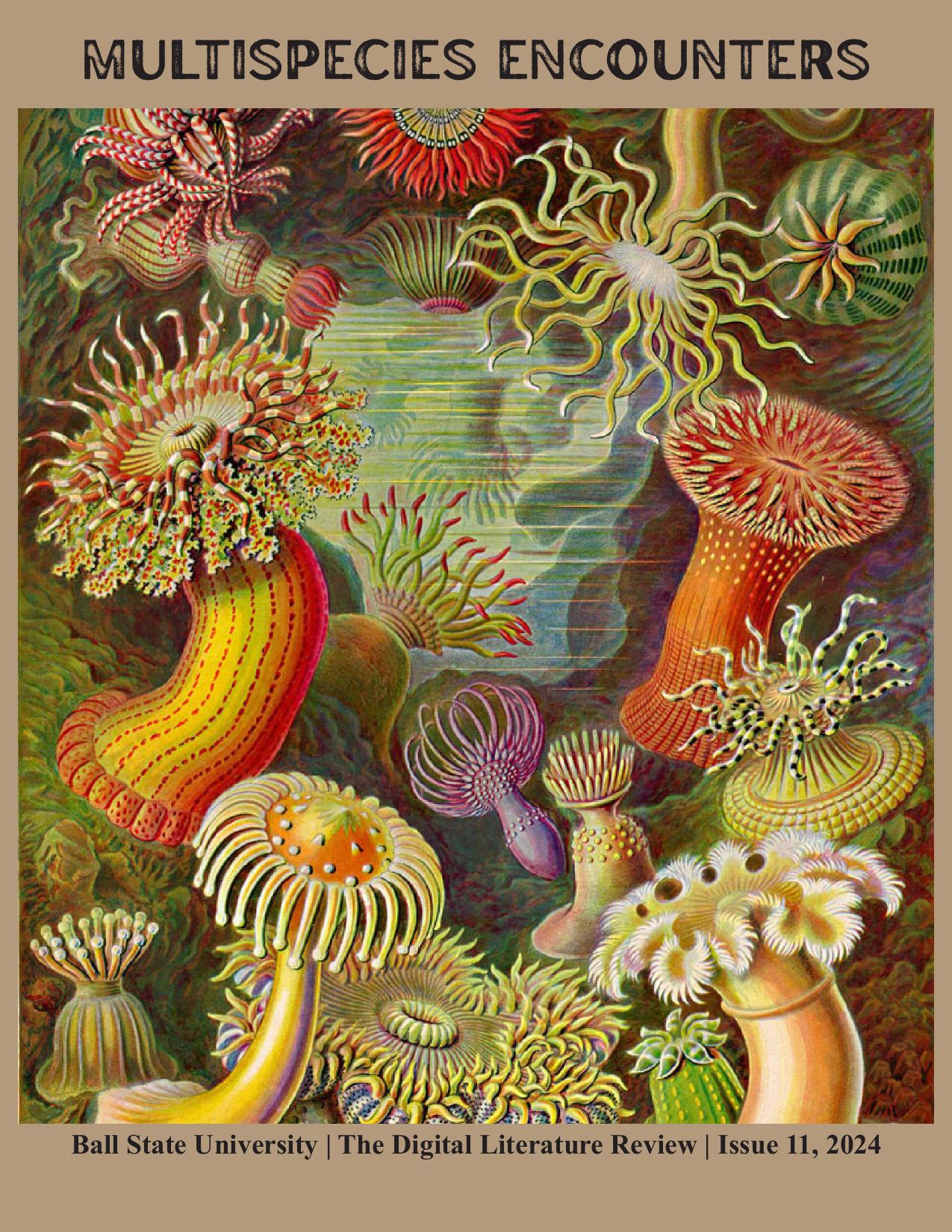Surrendering the Self
The Posthuman World in Vandermeer's Annihilation
DOI:
https://doi.org/10.33043/b8b79k4xzAbstract
In his novel Annihilation, author Jeff Vandermeer provides a science-fiction narrative on nature as an unstoppable and uncontrollable environment where plants, animals, humans, and the land exist as a collective and connected entity of interactions. The novel utilizes Lovecraftian horror elements of an uncontrollable nature, human contamination, and an unknowable future controlled by nonhuman forces to portray both a multispecies environment and the posthuman future. Read through a multispecies lens and framed by Donna Haraway’s Staying with the Trouble: Making Kin in the Chthulucene, this essay is an analysis of how Annihilation’s setting—Area X—necessitates the removal of human-centered processes and the human concept of individualism for favor of a flourishing multispecies environment. Its analysis exemplifies the genre of science fiction as a method to expand the boundaries of our perceived human-centered world. The narrative and rhetorical structures utilized by Vandermeer in his representation of real-world environments and natural processes as uncanny horrors and an off-center reality accurately represent the unknown future beyond the human species.
Downloads
References
Dowdall, Lisa. “Figures.” Covert Plants: Vegetal Consciousness and Agency in an Anthropocentric World, edited by Prudence Gibson and Baylee Brits, Punctum Books, 2018, pp. 151–60. JSTOR, http://www.jstor.org/stable/j.ctv2s2pnz3.14.
Gormley, Sam. Review of The Southern Reach Trilogy, by Jeff VanderMeer, and: Borne, Configurations, vol. 27 no. 1, 2019, p. 111-116. Project MUSE, https://doi.org/10.1353/con.2019.0004.
Haraway, Donna J. Staying with the Trouble: Making Kin in the Chthulucene. Duke University Press, 2016, pp. 30–57. JSTOR, https://doi.org/10.2307/j.ctv11cw25q
Haraway, Donna. “When Species Meet: Introduction.” When Species Meet, University of Minnesota Press, 2008.
Jackson, Rosemary. Fantasy: The Literature of Subversion. Routledge 2003.
Kneale, James. “From beyond: H. P. Lovecraft and the Place of Horror.” Cultural Geographies, vol. 13, no. 1, 2006, pp. 106–26. JSTOR, http://www.jstor.org/stable/44251076
Lovecraft, H. P., et al. “Letters to Farnsworth Wright.” Lovecraft Annual, no. 8, 2014, pp. 5–59. JSTOR, https://www.jstor.org/stable/26868482. Accessed 9 Dec. 2023.
Lovecraft, H. P. 1890-1937. and S. T. Joshi. The Call of Cthulhu and Other Weird Stories. New York, Penguin Books, 20111999.
Murphy, Timothy S. "Physiology Is Destiny: The Fate of Eugenic Utopia in the Fiction of H. P. Lovecraft and Olaf Stapledon." Utopian Studies, vol. 29 no. 1, 2018, p. 21-43. Project MUSE muse.jhu.edu/article/688382.
Prendergast, Finola Anne. “Revising Nonhuman Ethics in Jeff VanderMeer’s Annihilation.” Contemporary Literature, vol. 58, no. 3, 2017, pp. 333–60. JSTOR, https://www.jstor.org/stable/26529563
Vandermeer, Jeff. Annihilation. Afarrar, Straus and Giroux, 2014
Downloads
Published
How to Cite
Issue
Section
License
Copyright (c) 2024 Digital Literature Review

This work is licensed under a Creative Commons Attribution-NonCommercial-NoDerivatives 4.0 International License.



